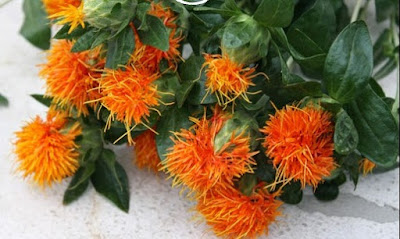Safflower (kusum, kusumbha, kardi) is one of the
oldest cultivated annual oilseed crops
which are well adapted to dry regions. The safflower seed also used to produce
oil. Safflower is a thistle-like plant with a central branch stem, a varying
number of branches and a tap-root system. Each branch has 1 to 5 yellow or
orange flowers and contains 15 to 20 seeds. This crop seed contains about 30 to
40 % oil. In India, This safflower oil (golden yellow coloured) is largely used
for cooking purposes. The main benefit of this seed is to produce cake after
oil extraction which is being used as cattle feed. The green safflower crop can
also be used as a green fodder for cattle and the livestock. When it comes to
nativity of safflower, it is believed that safflower is native to Arabia
region. However, this crop is grown most of the other parts of the world as
well. India ranks first in the world
with respect to acreage accounting for about 35 % of the world total production
of safflower. Maharashtra and Karnataka states are major producers this crop in
India. Safflower belongs to the family of "Asteraceae" and genus of
"Carthamus". The botanical name or scientific name of safflower is
"Carthamus tinctorius L." Read more here.
